So, Sir Bob Jones has passed away, and the news media is full of tales of politics and drama, speeding tickets and airline alternatives, being nice to nuns and single mothers, the New Zealand Party and of course Rod Vaughan getting punched in the head. As yet however, I’ve not read anything about what really floated Bob’s boat – the property industry. So here goes.
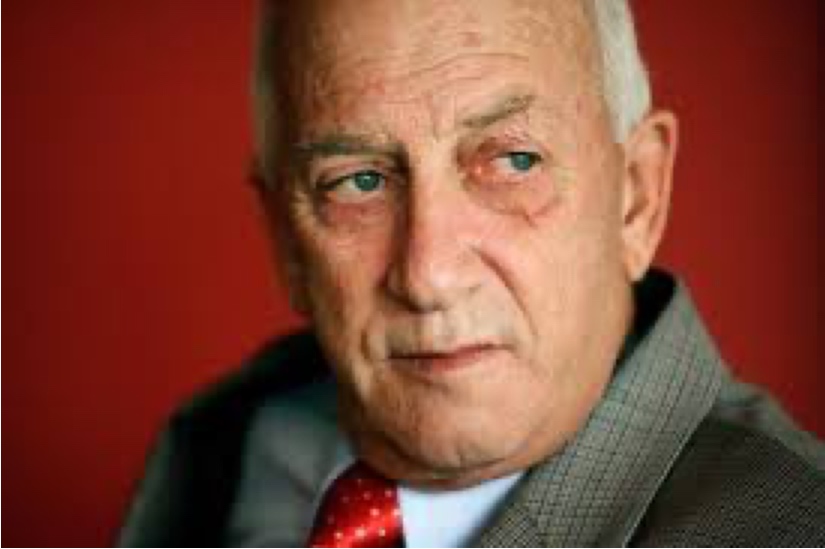
Many of Wellington’s architects have worked for Sir Robert, so there are many tales to tell out there. In some ways like Trump, he mixed property and politics, rudeness and arrogance, but in other ways he was completely different. Unlike Trump, who lies incessantly and never pays his bills, Bob Jones was in many ways a marvel to work with, in that he would pay his bills the same day he got the invoice and never tried to stiff you on the price. He could be a gentleman when he wanted, but mostly seemed to want to be a comedian, enjoyed smoking and drinking and specialised in saying outrageous things to everyone, but he loved his buildings and had no desire to cover them in a layer of cheap gold leaf.
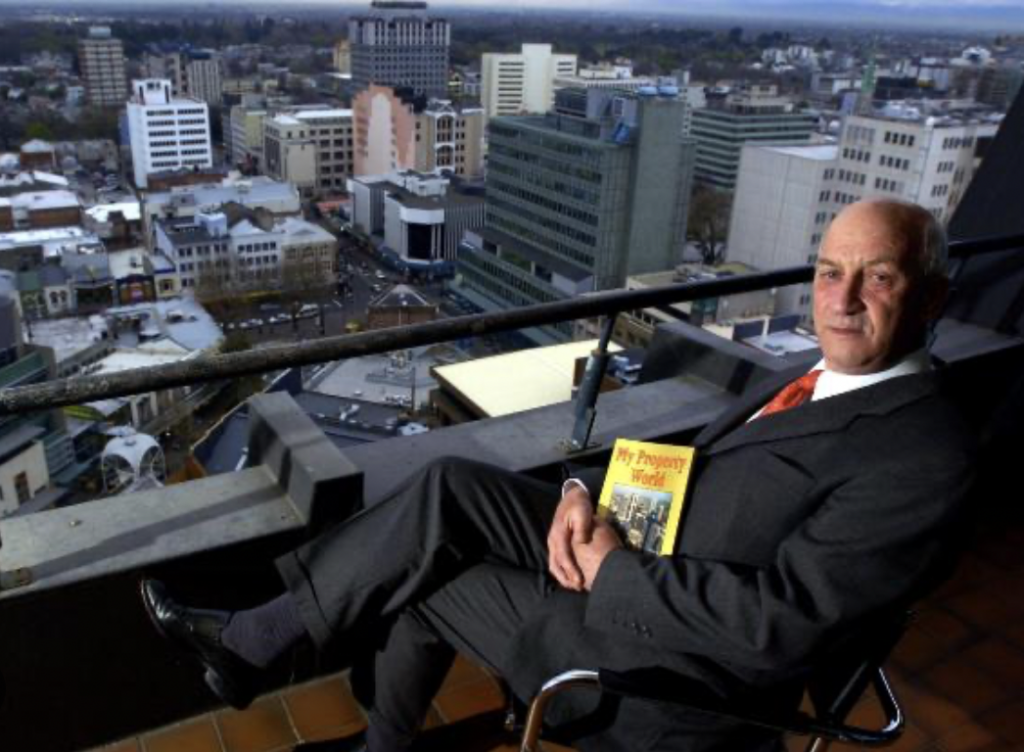
Again, unlike Trump, Bob had no desire to claim things that were not his. No Gulf of America equivalent for Bob, Mr Jones instead preferred to put plaques up on his buildings, commemorating events that his selected builders and architects would far rather forget. Subtlety was not a key Jones trait – but I’m sure that this man was a true exponent of “The Art of the Deal”, rather than the orange-headed wanker currently causing destruction. However, Trump and Jones both shared a love of appallingly bad art, Trump erring more towards kitsch and gilt, while Jones was strangely fond of filling his properties with hideous paintings by forgettable artists.
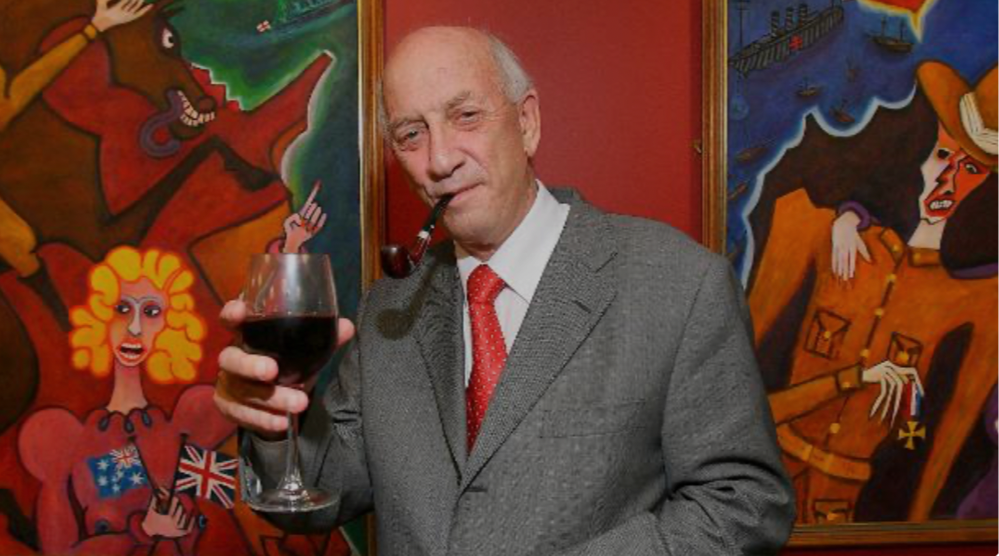
It is the properties that we should be looking at really though, and Bob had amassed a great collection in Wellington, Auckland, and Sydney. A correction though – unlike the many publications that describe Sir Robert as a property developer, he personally insisted that he was not. As he said to me on more than one occasion, he was a property investor, and besides, he did not own the buildings personally, the company did. Robert Jones Holdings (RJH) does what its name implies – it owns and holds firmly onto property, not developing and “flipping” the properties once they were complete.
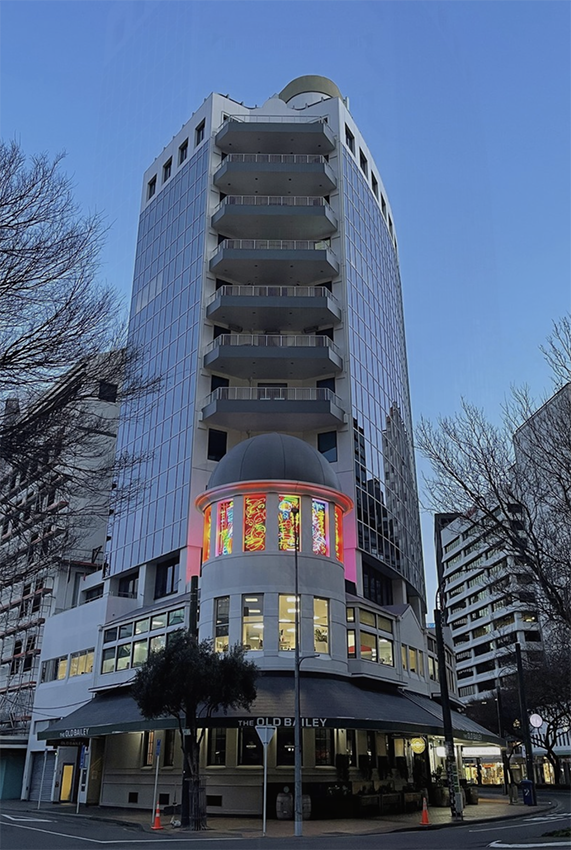
Sir Robert had a great understanding of what makes a good property investment. It wasn’t necessary to be a flashy or glitzy building, his purchases were often a bit drab and boring, but were filled with reliable, long-term tenants, who paid bills promptly and fulfilled one prime directive: they had to be sited on a corner, or be on their own, so that there were many corners. Take this building of RJH below – prime corner position, but essentially a tower and podium, so at least 3 good corner offices. Plus: a cracker of a plaque inside, that kept Bob chortling for years. You’ll need to visit it to read the joke.
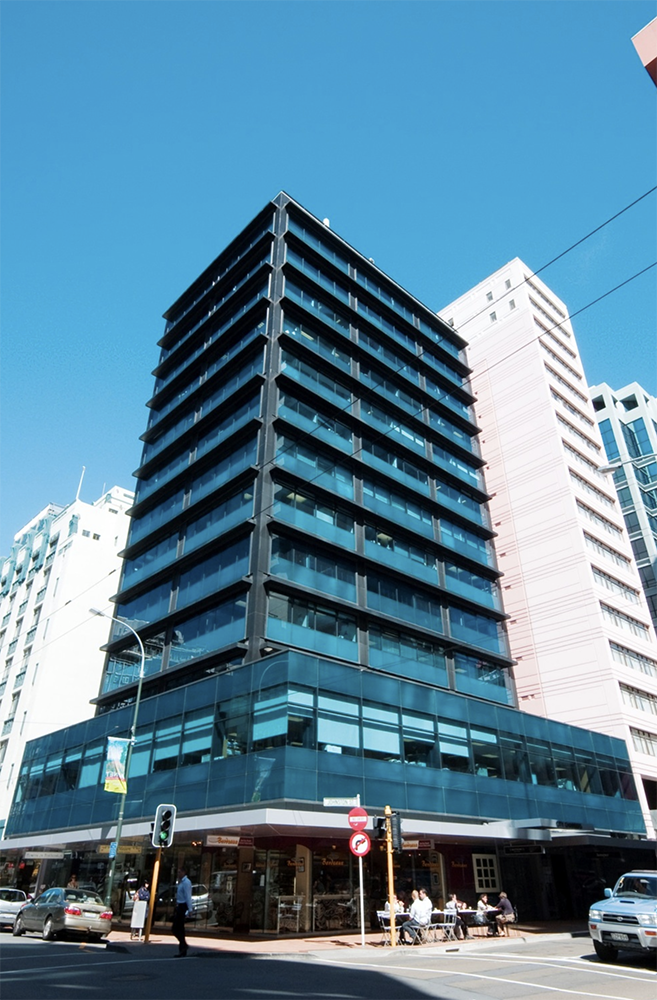
Property owners / developers love buildings with corners – they can’t get built out – and the rent for the desired corner offices is often quite a bit higher than an equal-sized office elsewhere. Wellington CBD was great for Bob’s attention, with numerous small blocks, many corners, and the NZ Government more keen to be a renter than an owner, so there are always a surplus of blue-chip rentals. Here’s another nearby Wellington corner block owned and held by RJH.
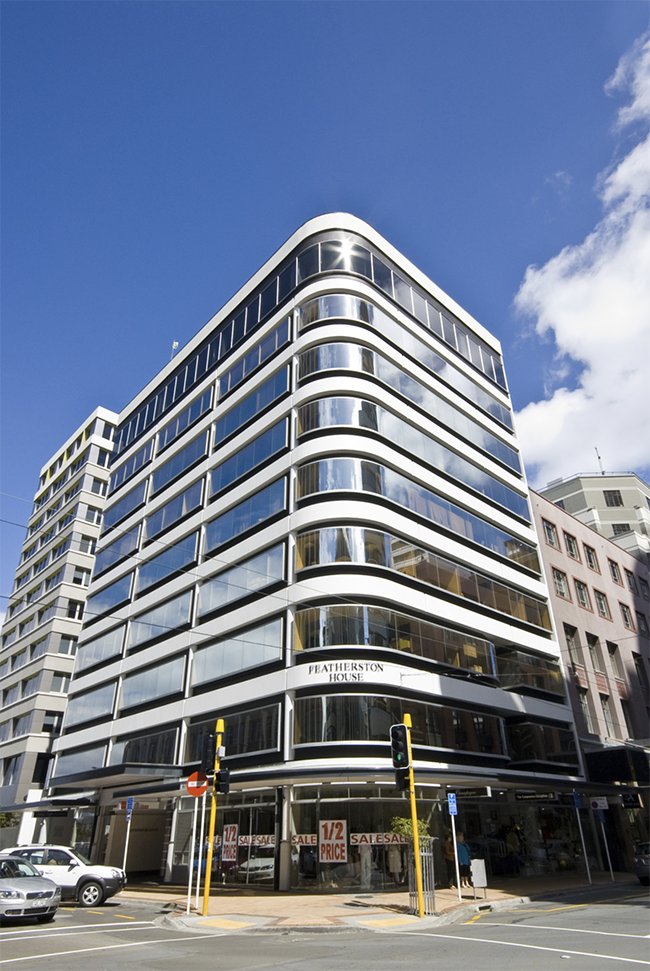
And in the same portfolio pic, here is a picture from inside this building, to show the magic of the corner top floor office. See what I mean?
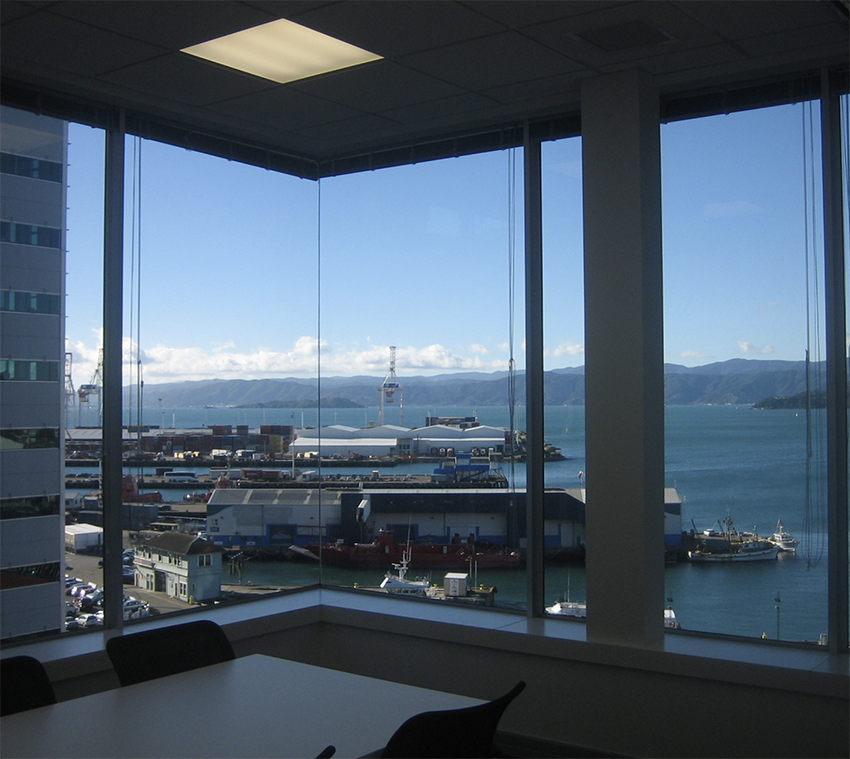
Over the years Bob (and thus RJH) also purchased property in Auckland (hard not to in NZ, as they are the biggest market) and also, I’m sure, in Sydney, although their company website only shows Wellington, Auckland, and Glasgow. Really? Scotland? What happened to the properties in Aussie? Don’t tell me he sold them?!

He did manage to buy what I still think is one of the best buildings in Auckland, designed by an Australian practice (rusty memory can’t remember their name), which was as tall and bronzed as a Bondi surf life-saver. Bob’s company invested in sensible buildings, rather than such showy numbers – but then again, who could resist a beauty like this?And with a floor plate like that, there are plenty of views out of the many corner offices…
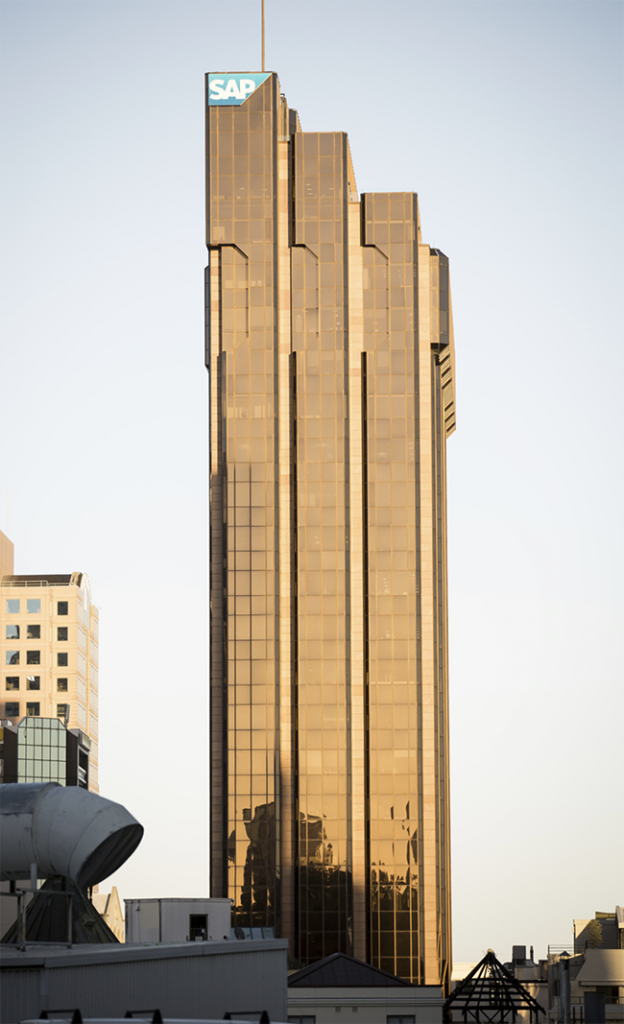
He frequently re-clad the buildings he bought, taking off the tired old skin and rejuvenating the building with a newer facade, more eco, although woah betide you if you mentioned sustainability to Bob. From memory, sustainability was a banned word, although if you could argue that a re-clad would make more sense economically, then he was as keen as mustard.
As you will know, Bob also had a flair for swearing, using the adjective power of the F word and the C word to the maximum, and he seemed to both enjoy women and mercilessly take the piss out of them at every given opportunity. Quite how his many secretaries over the years put up with him is still a mystery to me. I’m sure some must have just lasted hours, or maybe even days, while other staff lasted for, presumably, years. I didn’t stick around to watch.

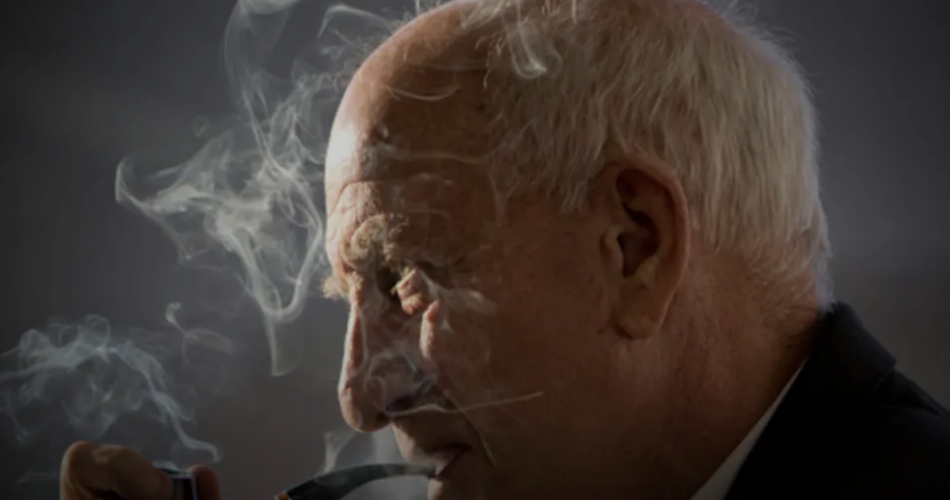
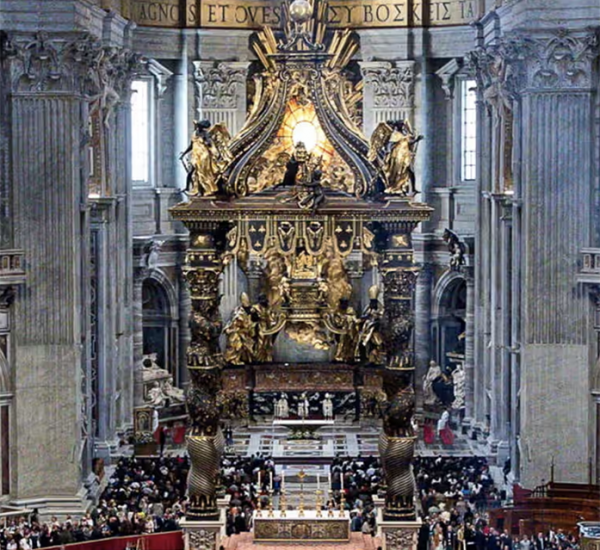

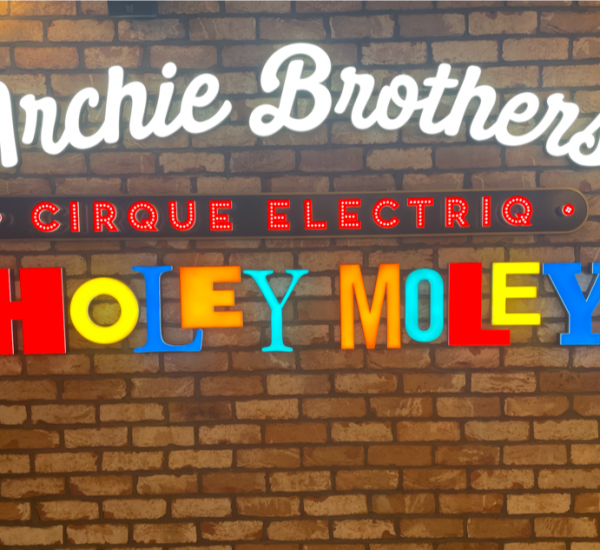
RIP Sir Bob. Never met him but my father worked on several of his Wellington buildings. One of his better quotes was published in the Herald in 2012:
“Nearly everything can be divided into two categories, namely fickle fashion and timeless principles. There’s a safe rule of thumb. If a new building receives an architectural award, then you can be assured that functionally, it’s a dog. Ninety per cent of our office buildings in their salient functional considerations are ill-designed.
In my 50 years of involvement I’ve known only one architect who understood the important matters, David Lough of Wellington. He died, unheralded other than by his clientele, a decade back.”
PS David Lough was known for his love of the colour brown. One of his buildings is Pencarrow House. I believe all have survived the seismic holocaust of 2016-present in Wellington
Yes, but like much of what Bob said, that’s bullshit. Good design is good design, and award-winning design is good design. Many of the buildings that RJH own are deeply uncool, rather naff-looking buildings that blend into the background. Many of them are also not planned well for modern office layouts – Bob could never understand the predeliction for open plan office space – he thought that people should still work in separate offices. Closed doors, enclosed rooms, and a balcony so you could have a smoke of your pipe outside. Honestly Bob, the world has moved on, and no one (except for Sir Robert himself) could live / work that way.
Bob also didn’t like to use a computer, and would either write a letter (with a feather quill on parchment perhaps?) or send a fax. The modern world had passed him by in many ways – or rather, in his pugnacious manner, he would often refuse to have anything to do with it. No wonder he was upset when Rod Vaughan landed his helicopter next to Bob while he was fishing.